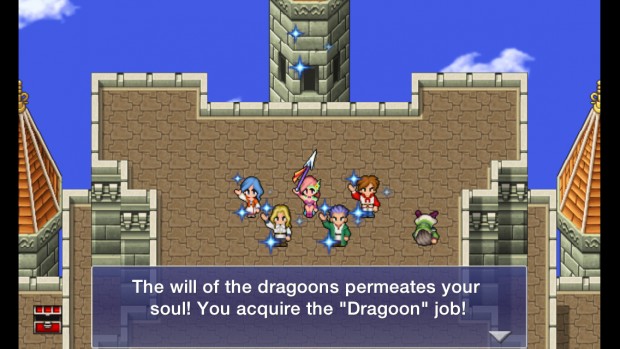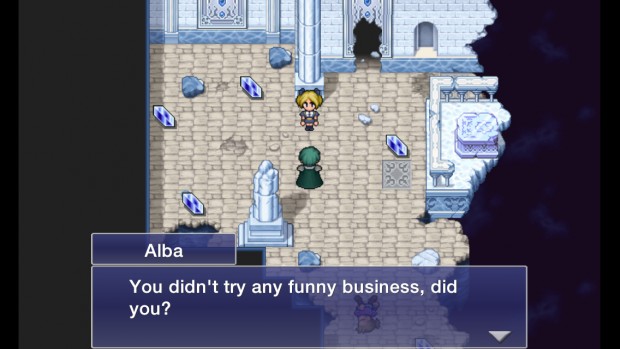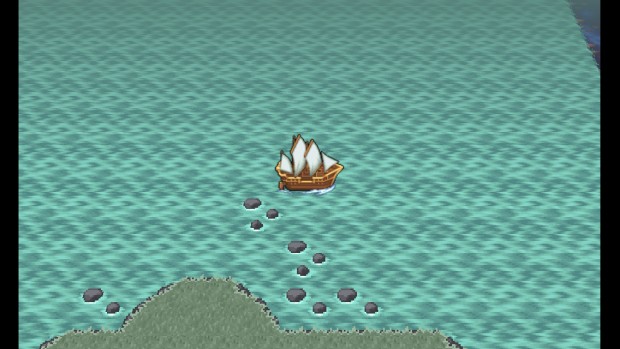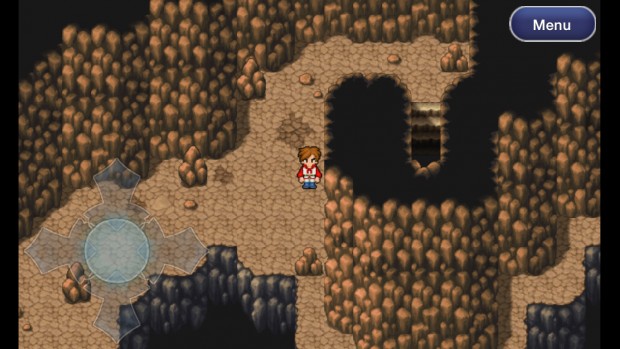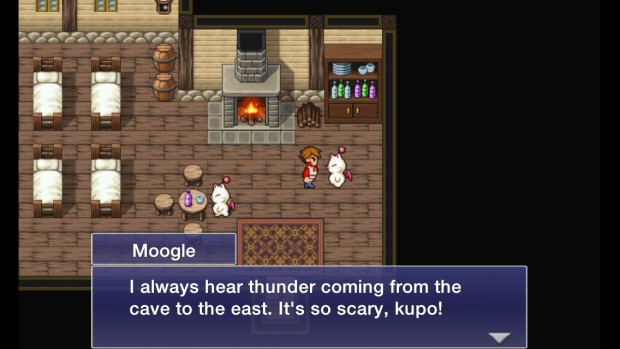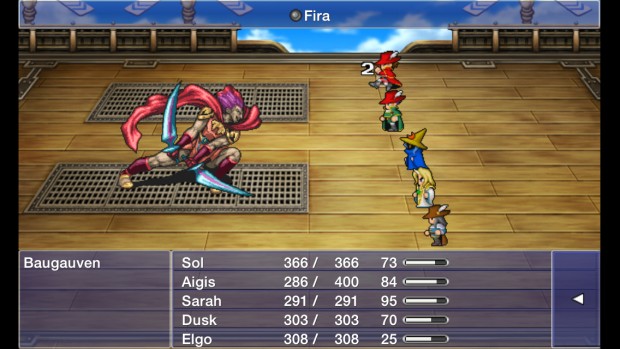 Hello, gentle readers, and welcome to the RPG Reload, the weekly feature where all of our jobs are classy. Each week, we take a look at an iOS RPG from the distant mists of time and yank it screaming into the future to see if it’s capable of becoming a proper member of today’s society. It’s a little revisiting, a little reflecting, and a chance to take a deeper dive than our reviews usually allow for. I try to present a balanced plate of RPGs from week to week, but everyone can use a little help once in a while. That’s why once per month I turn the selection to the readers. Hey, that’s you! Here’s how it works: just tell me which game you’d like to see by posting a comment below, stopping by the Official RPG Reload Club thread, or by tweeting me at @RPGReload. I’ll randomly choose a winner at the appropriate time, and we can all have fun playing and talking about the game of your choice. The next reader’s choice will be decided next week, so this is your last chance to get a suggestion in. Do it!
Hello, gentle readers, and welcome to the RPG Reload, the weekly feature where all of our jobs are classy. Each week, we take a look at an iOS RPG from the distant mists of time and yank it screaming into the future to see if it’s capable of becoming a proper member of today’s society. It’s a little revisiting, a little reflecting, and a chance to take a deeper dive than our reviews usually allow for. I try to present a balanced plate of RPGs from week to week, but everyone can use a little help once in a while. That’s why once per month I turn the selection to the readers. Hey, that’s you! Here’s how it works: just tell me which game you’d like to see by posting a comment below, stopping by the Official RPG Reload Club thread, or by tweeting me at @RPGReload. I’ll randomly choose a winner at the appropriate time, and we can all have fun playing and talking about the game of your choice. The next reader’s choice will be decided next week, so this is your last chance to get a suggestion in. Do it!
Wow, has it really been three months since we last covered a Square Enix game here in the RPG Reload? Maybe we’d have them more often if they’d fix some of their interesting ones that broke in iOS8. Well, no matter, because today we’re covering one of the less-broken titles in their selection, Final Fantasy Dimensions (Free). This game is noteworthy for being the only traditional-style Final Fantasy game that has only seen release on mobiles, and it’s looking like it will hold that designation for the foreseeable future. It’s safe to say Square Enix was testing the waters on iOS with this game, and my hunch is that they didn’t find the outcome agreeable enough to continue along a similar line. Even the sequel, Final Fantasy Legends: The Crystal Of Time And Space, is closer to a social RPG than it is to a traditional Final Fantasy. That makes this game something of a one-of-a-kind.
Well, it would probably be more accurate to say it’s two-of-a-kind, since Final Fantasy Dimensions truly follows in the footsteps of Final Fantasy 4: The After Years ($14.99). They share almost the same development team, along with similar hardware origins, overall structures, and even faults. We’ll talk about The After Years in another edition of this feature at some point, so I won’t go into that game’s history too deeply here. Suffice it to say that the game was a chapter-based RPG in the 16-bit style that was delivered piecemeal to Japanese feature phones. It was developed by frequent Square Enix collaborator Matrix Software under the direction of Square Enix’s Toshio Akiyama, while the producer duties were handled by the legendary Takashi Tokita, the lead designer of the original Final Fantasy 4 ($14.99) and one of the directors of Chrono Trigger ($9.99). Starting from February 2008, chapters were delivered to Japanese players at a rate of about one per month, finally finishing up in December of that year. It was a huge success, and ended up being remade for a few other hardware platforms, with all but the original release getting an English version.
Although Square Enix sometimes sits on a success, that wasn’t the case here. The same team was sent to work on yet another chapter-based feature phone game, announced in July of 2010 as Final Fantasy Legends: The Warriors Of Light And Darkness. The game would use the same engine as The After Years and follow a similar release pattern, with the first chapter hitting in September of 2010 and the last one arriving almost a year later in August of 2011. While its predecessor had received remakes and international releases on WiiWare and the Sony PSP by this time, but Final Fantasy Legends had a different fate in store. Its first and to date only remake would arrive on smartphones, announced at the 2011 Tokyo Game Show. The rest of the world could officially join in on the excitement at E3 2012, when Square Enix officially announced the game, now titled Final Fantasy Dimensions, would hit worldwide later that year. They played coy with the price, but it wasn’t hard to work out from the prices of the original version in Japan and of The After Years on WiiWare that it was going to be a bit higher than most smartphone gamers were used to.
Even with that expectation, quite a few people were shocked when the price was revealed just days before the game’s release in August 2012. The Prologue chapter was free, but the rest of the game was available as a full unlock for $28.99, or a la carte for a total cost of $29.96. There was also an extra $9.99 IAP that give you access to a chiptune version of the game’s soundtrack. Now, that price was cheaper than the original game’s cost on Japanese feature phones, but you probably don’t need to peek to guess that the reaction was vitriolic even among the presumably premium-favoring audience of TouchArcade, let alone the masses. Some were worried it would set a precedent for the App Store if they supported such a scheme. A few years down the road, one can only wish it had, in my opinion. While Square Enix would hit a similar price point on the App Store in Japan a few times after this with Dragon Quest 8 ($19.99) and Chaos Rings 3, they’ve never done so again internationally. At the same time, the IAP on Final Fantasy Dimensions slowly dropped to the point that you can now pick up the whole thing for a cool $13.99, with that chiptune IAP now a more reasonable $4.99.
To make things worse, the initial release had a bit of a problem with its IAP, meaning that for a whole holiday weekend, players only had access to the Prologue chapter. Rather oddly for a chapter that is ostensibly meant to sell you on the full experience, the Prologue doesn’t even begin to show you what Dimensions has to offer. Oh, it sets up the story and introduces the characters, but when they said they were trying to make a new game in the 16-bit style, they were obviously thinking more of Final Fantasy 5 ($14.99) than Final Fantasy 6 ($14.99). The story here isn’t bad, even if it leans a bit too heavily on cheap pops for my liking, but the game’s main virtues are in its gameplay systems. Unfortunately, you didn’t gain access to most of those interesting bits until after the first paywall. I’m quite sure many people tried Final Fantasy Dimensions, but I have a feeling a low percentage actually played it through. What the Prologue chapter did reveal in all its glory was the presentation of this remake, a style that would later be used to make the smartphone versions of Final Fantasy 5 and Final Fantasy 6. It’s probably an understatement to say that people are mixed on this art style even to this day.
It’s too bad that the Prologue does such a handy job of scaring people away. While Final Fantasy Dimensions has some deep flaws, it proves itself to be more than worth its initial asking price over the course of the game. The job system is a smart variation on the one found in Final Fantasy 5, and while it doesn’t offer quite the same level of sandbox that game’s take does, its limitations make for a much more tactical approach to building your characters. By using an original setting, it avoids the fan-fiction feeling that pervades The After Years, and has a lot better pacing all-around than that title. Most of all, it’s exactly what it promised to be: a huge, new Final Fantasy in the style of the 16-bit era games. It ends up being even longer than any of the real Final Fantasy games of that period, and is actually one of the longer games of the entire series. The soundtrack by Final Fantasy 11 composer Naoshi Mizuta, while not quite up to the standards of Nobuo Uematsu’s work in the 16-bit era, is still quite strong overall. Even the much-maligned visual style of the game grows on you after a while. The monsters in particular look fantastic, and the spritework on the main characters is quite impressive given the sheer variety of combinations possible.
The story starts off well enough. You’re introduced to two groups of characters who end up shooting for the same goal. When they awkwardly arrive at the party at the same time, everything sort of blows up, creating two separate worlds of light and dark. Naturally, half of the characters end up in one world while the remaining half are in the other, and the groups are of course mixed up from their original configurations. That’s how we make drama, friends. Each side eventually comes to realize that they must collect the crystals scattered around their respective worlds to reunite the two halves and see their friends again. The plot has an odd flow for a Final Fantasy game, though it makes perfect sense in the context of the game’s original distribution method. While the iOS version comes in five pieces, the original game came in 13 chapters. Each of the iOS version’s chapters includes a handful from the original release, somewhat obfuscating the original circumstances. It’s important to keep that in mind, because like The After Years this game very much focuses on mini-stories.
With the parties split, you’ll bounce back and forth between the two quite regularly. Each episode with one party will typically run about three or so hours and focuses around finding a crystal in the immediate area. This task is without fail tied in with a character who will temporarily join the party, and whose problems must be solved in order to retrieve a crystal. Coincidentally, these crystals will unlock the job classes of each of these characters for the permanent party members to use. This emphasis on vignettes gives the game a cadence more akin to the Dragon Quest games as opposed to Final Fantasy in its classic form, but it’s a format that works well on handhelds. There are lots of natural stopping points where you can take a break and work on something else, or you can just keep on going if you feel like it. The flow of Dimensions is one of the big ways it improves over The After Years. While that game’s chapters felt disjointed, aimless, and at times wholly unnecessary, everything in Dimensions feels like a comfortable part of the whole while still providing satisfying sub-stories.
Sadly, while the vignettes work well, the overall story doesn’t amount to much. It’s as thin and unrefined as Final Fantasy 5 at its worst, and with none of the self-awareness and goofy charm that game has to offer. Dimensions leans too heavily on dropping references to older Final Fantasy titles, which hurts the game in a couple of ways. It feels like a desperate cry for attention, like constant elbow digs from old friend from high school that you’re meeting after years of being apart. It wouldn’t be so bad if it didn’t lay it on quite so thick, but it’s almost non-stop. This ends up choking out the game’s own story and sense of individuality, and seriously damaging the game’s intended goal. I’d like to say there’s no chance an authentic Final Fantasy would indulge in so much nostalgic self-congratulation, but Final Fantasy 9 is a thing that exists, so I’ll just have to settle for saying that Dimensions doesn’t pull it off nearly as well as that game does.
The gameplay end of things fares much better, fortunately. While it’s more obviously linear than most of the Final Fantasy games, in practice it’s not so different from the 16-bit entries. The game does eventually open up, but for the most part, your task is right in front of you with only a couple of optional stops along the way. The game uses the Active Time Battle system for its combat, which hopefully needs neither introduction nor any additional praise at this point, and the dungeons are designed fairly well, with plenty of good treasure waiting for those who explore thoroughly. That can be a bit of a bear at times, though, since the encounter rate is very high in this game. There are enough random battles between save points that you’re always in a bit of danger of running out of MP to keep everyone patched up, which I suppose is a good thing when I’m writing about the game, but fairly unpleasant when I’m playing it. It’s a tough game, closer to the challenge of The After Years than the genuine 16-bit Final Fantasy games, but Dimensions gives you far more tools to overcome those challenges than its feature phone predecessor did.
Those tools, of course, come from the game’s use of the job system, that ever-reliable signal that you are playing one of the more mechanically interesting Final Fantasy titles. In Dimensions, it works very similarly to its Final Fantasy 5 implementation. You start off jobless which might seem rather depressing at first, but it becomes more and more enticing the longer you spend toiling away at various jobs. Which is to say, by spending time leveling up the different jobs, you’ll unlock new abilities that can then be used with other jobs. The jobless type has the most flexibility with its equipment selection and open slots for abilities, allowing you to create some powerful combinations. As you recover more crystals, new jobs will unlock, giving you even more toys to play with. Changing jobs is quick, easy, and incurs no penalty, so you can always switch characters around for strategic reasons if you like.
That’s all the same as in Final Fantasy 5, but Dimensions does a couple of things differently. Jobs are capped at just three levels when you first unlock them, and it doesn’t take too long to max those first three levels out. To go beyond that cap, you’ll need to use Job Points, which are given out to you in controlled quantities at specific points in the story. Each job maxes out at level 20, and you get 69 points during the main story, so you can only max out around four jobs for each character. You can’t respec, either, which might make some players feel that bad sort of anxiety that comes from uncertainty. I can only assuage that by telling you the game is beatable with almost any combination, and that beating a post-game boss will give you unlimited Job Points. You can still max out everything if you want to in the long run, but the game puts some limitations on you for the majority of its run. I actually don’t mind that, to be honest. While there’s a great appeal in creating all-powerful characters in games like this, I personally find it more fun to have to make careful choices about who will serve which role in the party. If you’re still really worried, just stick to the classic roles and you’ll be more than fine, I promise.
The other restriction is an interesting one that I guess happened as a matter of practicality. The four characters in the light world and the four characters in the dark world both start with the same basic set of jobs: fighter, monk, thief, red mage, white mage, black mage, and summoner. After that, each party is seeking out different crystals. Since they are separated, each party doesn’t have access to the other’s gear, money, and so on. That ‘so on’ includes recovered crystals, making certain jobs exclusive to certain characters. This was probably put in so that the sprite artist didn’t have to do quite so much work, but it also makes sense from a narrative point of view. Paladins in the light world, dark knights in the dark world. Near the end of the game, you’ll have to make some choices about which characters will be in your active party, and this job separation helps spice up the process. There aren’t quite so many jobs in Dimensions as there are in Final Fantasy 5, and this game isn’t quite as sublimely balanced as that one. You don’t have quite the same level of flexibility or customization. Even with those provisos in place, the job system in this game is a lot of fun to toy around with. It keeps the fires burning even in those spans of time where the narrative runs cold and the dungeons begin to grate.
Final Fantasy Dimensions doesn’t feel as fully-formed or confident as the 16-bit installments it draws so heavily from, but it’s a clear improvement over the team’s prior game and a very worthwhile part of Square Enix’s mobile line-up. It would be worth a play even if all it had to rest on was its enjoyable take on the job system, but its zesty challenge and amusing vignettes certainly help seal the deal. This might be heresy, but I actually had more fun replaying Dimensions this time than my last run through Final Fantasy 6. It’s by no means a better game, but there’s a lot more potential for replay chicanery here. If you like Final Fantasy and haven’t played it yet, it’s assuredly worth its current asking price, and if you have played it, it’s also pretty fun to play again, especially if you force yourself to try new strategies. It may not have lived up to people’s wildest dreams, but it doesn’t have to do that to be a welcome part of any JRPG fan’s library, I think.
It should be noted that while Final Fantasy Dimensions isn’t broken under iOS 8 like some of Square Enix’s games, it can be a bit finicky about restoring purchases or even selling its IAP on some hardware. I got it to go through on my second try on an iPhone 5S and the first try on an iPad 4, so it’s not terrible. Interestingly, the game received an update shortly after iOS 8 launched that was supposed to address this, but it obviously could use another pass. That said, once I got through the purchase restoration, I never had another problem for the rest of the game. It at least works, which is more than we can say at the moment for certain other titles from Square Enix.
That’s just my take on Final Fantasy Dimensions, though. What do you think? Cheap photocopy of Final Fantasy 5? Unfairly underrated because of sticker shock? I want to hear your opinions, so please leave a comment below, post in the Official RPG Reload Club thread, or tweet me at @RPGReload. Don’t forget to suggest a game for the next reader’s choice while you’re at it. This is the last chance for the May feature! As for me, I’ll be back next week with another cool RPG. Thanks for reading!
Next Week’s Reload Hint: It’s a favorite of Archanean archers!
